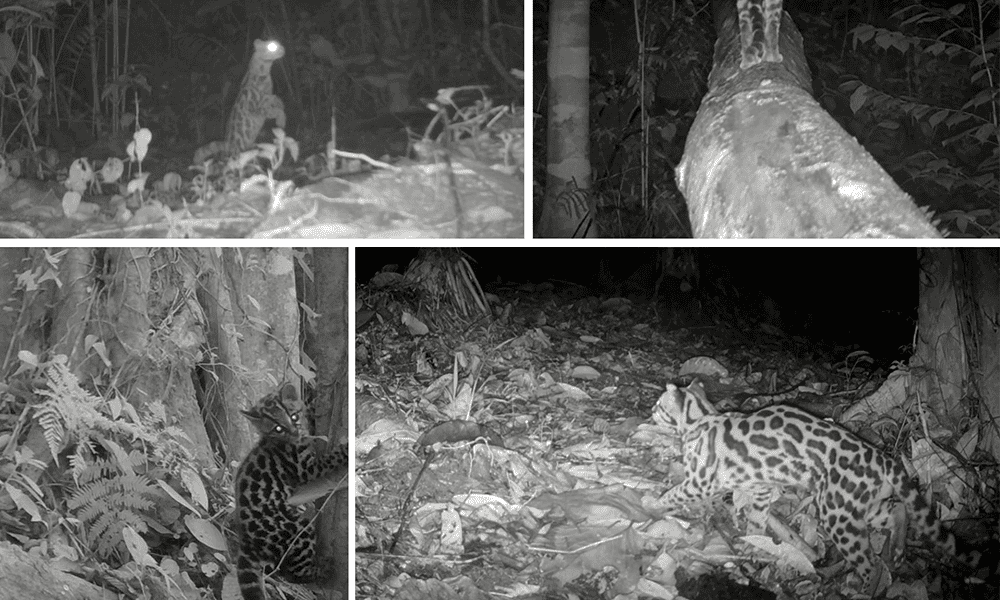Let’s meet the margay. This sleek, spotted cat is one of Costa Rica’s six species of feline and the most arboreal of the group.
The margay (Leopardus wiedii) is most frequently known as the caucel in Tico Spanish. I’ve also come across folks who call them tigrillos, but there’s another very margay-ish cat (similar looking, just slightly smaller) in Costa Rica called the oncilla that lays claim to the name tigrillo. The name confusion derives from the similarity between the two felines which apparently is so great that they were once considered a single species.
Keeping with the cat confusion theme, margays also look very similar to ocelots. Both are small spotted cats that could be brought to the mind’s eye by the description of a mini jaguar. There are a few differences that I use to distinguish between the two species when reviewing camera trap footage. First, is size. Margays are smaller than ocelots and their bodies are generally sleeker. Second, margays have little heads with proportionally larger eyes than ocelots.
This seems like a slight difference, but when you’re accustomed to seeing ocelot’s blockier heads, margay’s little bean heads stand out. The final thing I look for if I’m unsure if I’m looking at a margay or a small ocelot is the tail. Margays have a longer tail, about 70% of their head and body length, while ocelots have a shorter tail, about 45% of their head and body length. If the tail is longer than the back legs, I’m looking at a margay.
Though uncommon within their range, margays can be found throughout almost the entirety of Costa Rica. They tend to be found in mostly pristine or old secondary growth forests. In my experience, I’ve recorded more margays in humid forests as opposed to the dry forests of Guanacaste. The only dry forest where I have consistently recorded margays was in Diriá National Park in Santa Cruz.
Margays are solitary, nocturnal, and mostly arboreal. They spend so much of their time amongst the branches that their anatomy reflects their tree-dwelling lifestyle. That long tail that we talked about earlier is used as a counterweight, helping them keep their balance in the treetops. They have proportionally longer claws than most cats, an adaptation that aids in climbing. They also have flexible hind ankles that have the ability to rotate backward 180 degrees, allowing them to firmly grasp branches and lower themselves headfirst down tree trunks.
Their diet includes just about any small critter they’re able to catch in the treetops including birds, small mammals, and arthropods, supplemented with fruit and the occasional ground dwelling mammal such as rabbits and young agoutis and spotted pacas.
I’ve never had the good fortune of spotting a margay in the wild, though I’m constantly scanning trees and patches of vines high in the branches hoping to catch a glimpse of one sleeping the day away, waiting for night to fall. I infrequently record them with my camera traps. When I do record them, it is mostly when I’m working in large patches of undisturbed humid forest. My favorite margay clip of all time wasn’t recorded in the middle of a huge forest though.
A few years ago, I recorded a series of videos of a female margay with a young juvenile amongst the protected forests within the coffee farm of Aquiares. I happened to place a camera trap in front of a huge tree that they liked to climb and was rewarded with some fantastic footage, some of which you can see in the video below.
About the Author
Vincent Losasso, founder of Guanacaste Wildlife Monitoring, is a biologist who works with camera traps throughout Costa Rica. Learn more about his projects on facebook or instagram. You can also email him at: vincent@guanacastewildlifemonitoring.com






